

Exploring our past to sort out myth from reality
Share this Page on
Facebook or Twitter

These are the voyages of the TimeShip Anachron.
Our Mission: To boldly explore the past, dispelling
mythinformation and mythconceptions
of American History along the way.
 Visit us on Facebook
Visit us on Facebook
Meet MythAmerica LITE
Cocaine for the Kiddies
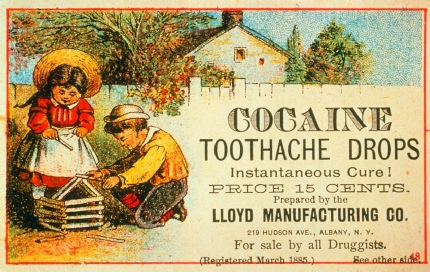
Cocaine toothache drops were popular with children and with their parents.
Not only would the medicine numb the pain,
but it could also put the user in a “better” mood.
With the epidemic in recent decades of young people addicted to cocaine in the US, it is jarring to our sensibilities to see ads from the 1800s that target parents themselves to push cocaine on their small children! I’ve seen this ad circulated on the Internet a lot over the past few years, but it is only one of many such vintage ads for patent medicines that can be found on websites. Patent medicines were the “over the counter drugs” of their time back in Victorian America.
Patent medicines are compounds promoted and sold as medical cures that do not work as promoted. “Patent medicine” is a misnomer since in most cases, although products might be trademarked, they are not patented (the patent process requires proof that something new has been discovered). In ancient times, patent medicine was sometimes called nostrum remedium (“our remedy” in Latin).
The promotion of patent medicines was one of the first major products highlighted by the advertising industry, and many advertising and sales techniques were pioneered by patent medicine promoters. Patent medicine advertising often promoted the advantages of exotic ingredients, even though their actual effects came from more prosaic drugs. One group of patent medicines — liniments that allegedly contained snake oil, supposedly a panacea — made snake oil salesman a lasting synonym for a charlatan.
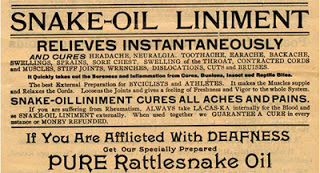
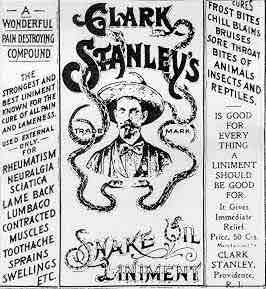
…The phrase “patent medicine” comes from the late 17th century marketing of medical elixirs, when those who found favour with royalty were issued letters patent authorising the use of the royal endorsement in advertising. Few if any of the nostrums were actually patented; chemical patents did not come into use in the United States until 1925. Furthermore, patenting one of these remedies would have meant publicly disclosing its ingredients, which most promoters sought to avoid.
Instead, the compounders of such nostrums used a primitive version of branding to distinguish their products from the crowd of their competitors. Many familiar names from the era live on today in brands such as Luden”s cough drops, Lydia E. Pinkham”s vegetable compound for women, Fletcher”s Castoria … Though sold at high prices, many of these products were made from cheap ingredients. Their composition was well known within the pharmacy trade, and druggists manufactured and sold (for a slightly lower price) medicines of almost identical composition. To protect profits, the branded medicine advertisements emphasized brand names, and urged the public to, ”...accept no substitutes.”
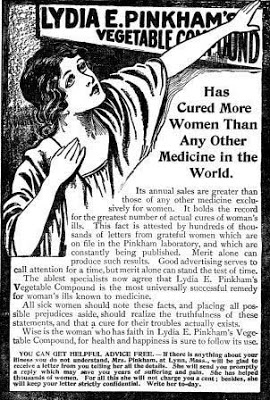
There was a thriving business for patent medicines in the 1800s in particular because there really were very few “legitimate” medical treatments for many—if not most—ailments and diseases at the time. And…many if not most such nostrums contained ingredients that did indeed give relief for all sorts of symptoms—because they contained strong narcotic substances. Such as laudanum, a concoction of alcohol and morphine:
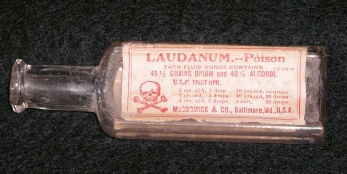
Check that label up close…it gives “dosages” for individuals clear down to infancy!

Many famous folk of the era were addicted to laudanum and other narcotic drugs, some perhaps because of even starting them in their mother’s lap as infants. Some examples—Abraham Lincoln’s wife Mary, English poet Samuel Taylor Coleridge, Elizabeth Barrett Browning, Percy Bysshe Shelley, John Keats, Lewis Carroll (Alice in Wonderland), Charles Dickens, Edgar Allen Poe, and many more. These users often received their first introduction to the drugs via prescription by a doctor, and continued to the point of addiction by buying large amounts of the drug on their own later.
But addiction was widespread in Victorian America. Many average citizens, male and female, ended up in the same state as a result of the use…and ultimate unknowing abuse…of patent medicines. It wasn’t until near the end of the 1800s that the facts about the dangers of “drug addiction” became clearly understood. You can read about this in a fascinating, but disturbing, book I have.

And you can see some of the startling ads from the period for these medicines below. But first, let’s review just what it was that they contained that made them so effective—and addictive. I’ve long had trouble sorting out in my mind the difference between a number of narcotic drugs. I’ll bet that it is true for many readers. So here is a brief summary of terms I’ve compiled:
Narcotic: a drug or other substance affecting mood or behavior and sold for nonmedical purposes, especially an illegal one.
Psychotropic: a type of drug that affects a person’s mental state
Alkaloid: naturally occurring organic nitrogen-
Opium: A bitter, yellowish-
The following four are all derived from Opium:
Morphine: A chemical that can be extracted from opium and used for analgesic (pain-
Heroin: a highly addictive analgesic drug derived from morphine, often used illicitly as a narcotic that produces euphoria. It is more powerful than morphine.
Laudanum: an alcoholic solution containing morphine, prepared from opium and formerly used as a narcotic painkiller.
Codeine: A chemical that can be extracted from opium and used for analgesic and narcotic purposes.
Cocaine: a powerful nervous system stimulant, extracted from the leaf of the coca plant native to western South America. Chewing the leaves themselves, as has been done from time immemorial by the natives, does not give enough of a dose of the active ingredient in cocaine to induce addiction and cause the kind of euphoria and other “psychoactive” effects of the extracted drug. “Pure,” highly refined cocaine—like that “sold in the streets” of America—IS powerfully addictive.
In other words, there is a family relationship between opium, morphine, and heroin: The raw material direct from opium poppies is opium. Morphine is one of its constituents, and when extracted out is more powerful than opium. Heroin is synthetically created from and is more powerful than morphine.
Cocaine is a narcotic drug from a totally different source.
With that understanding of the possible “active ingredients” in many Victorian-
But first a notice from that website:
Note: Most contemporary pharmaceutical manufacturers and several spice companies produced products containing potent psychoactive compounds like opium. Some of these companies are prominent companies today manufacturing and distributing well-
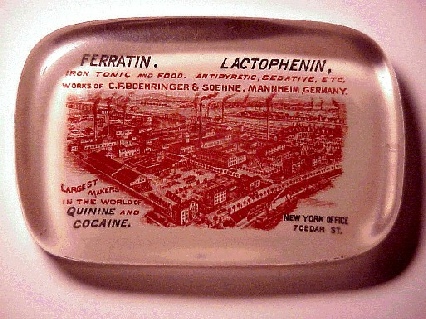
Paperweight advertisement for C.F. Boehringer & Soehne
(Mannheim, Germany), “largest makers in the world of quinine and cocaine.”
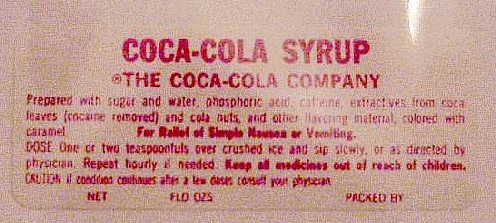
Early Coca-
Yes, the rumors are true. The “coca” in the name of Coca-
They couldn’t just eliminate the coca leaf extract entirely, as that would have left their trademark name—already a wildly popular brand, as seen in the 1890s ad below—in question. How do you have COCA-
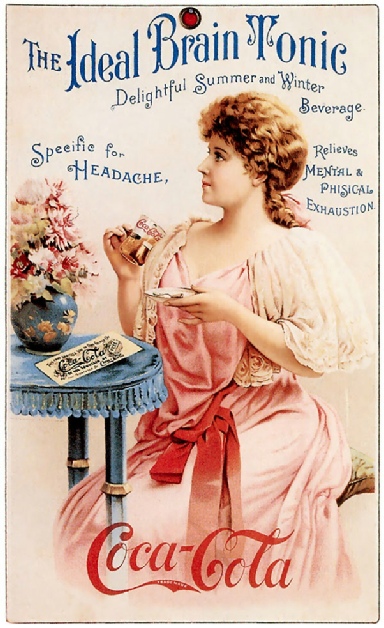
Then there were the “coca wines.” Yes, wine mixed with cocaine.
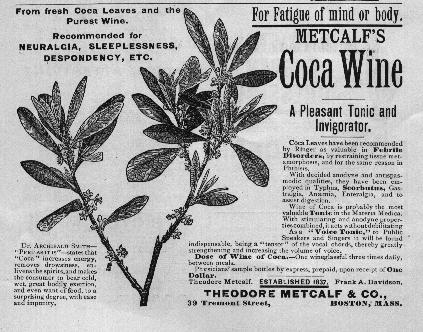
Metcalf’s Coca Wine was one of a large number of cocaine-
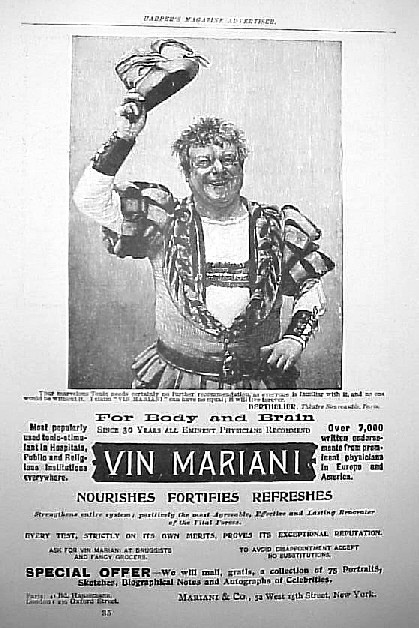
Vin Mariani was the leading coca wine. This advertisement features an endorsement from Berthelier, a popular late 19th century actor. The caption immediately below the photograph reads, “Your marvelous Tonic needs certainly no further recommendation as everyone is familiar with it, and no one would be without it. I claim “VIN MARIANI” can have no equal; it will live forever.” The caption also proclaims “over 7,000 written endorsements from prominent physicians in Europe and America” and that the product has had acclaim for 30 years. (From Harper’s Magazine, March, 1894.)
Vin Mariani was so popular it was even served at the Vatican in Rome!
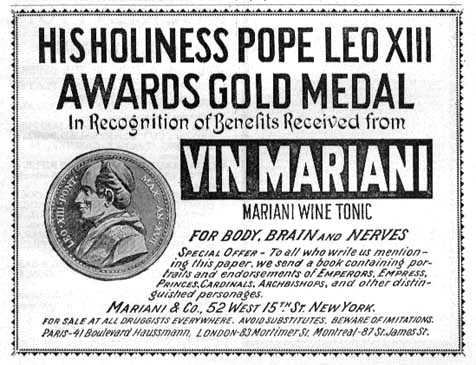
In addition to endorsements from celebrities, physicians, and scientists, Pope Leo XIII also endorsed the popular product for its beneficial effects.
Opium and its Derivatives
Opiate-
Modern authors usually suggest that widespread opium use was a major health problem during the 19th century. However, the use of opiates must be kept in proper perspective with other contemporary health problems. Mortality from cholera, malaria, and dysentery was very high, and opiates provided some relief from these illnesses (Opiates remain the most effective treatment for dysentery.). Some authors have suggested that the easy availability of opiate-
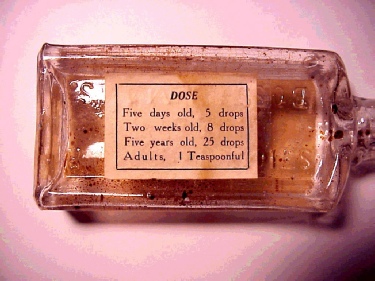
This bottle of Stickney and Poor’s paregoric was distributed much like the spices for which the company is better known. McCormick also manufactured and sold paregoric, which is a mixture of opium and alcohol. Doses for infants, children, and adults are given on the bottle. At 46% alcohol, this product is 92 proof which is pretty potent in itself.

Heroin was commercially developed by Bayer Pharmaceutical and was marketed by Bayer and other companies (c. 1900) for several medicinal uses including cough suppression.
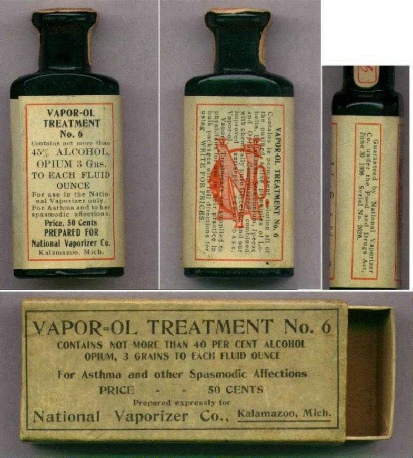
This National Vaporizer Vapor-
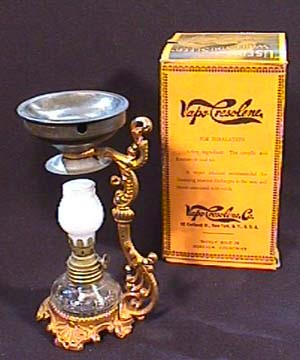
Vapo-
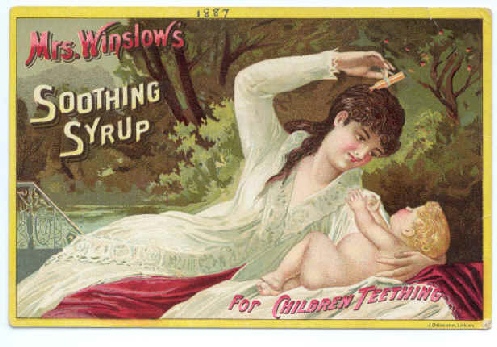
Mrs. Winslow’s Soothing Syrup was an indispensable aid to mothers and child-
Shortly after the turn of the century, concern about the addictive properties—and other dangers—of many patent medicines led to a vigorous movement of investigative reporting, public outrage, and eventual governmental intervention in the free-
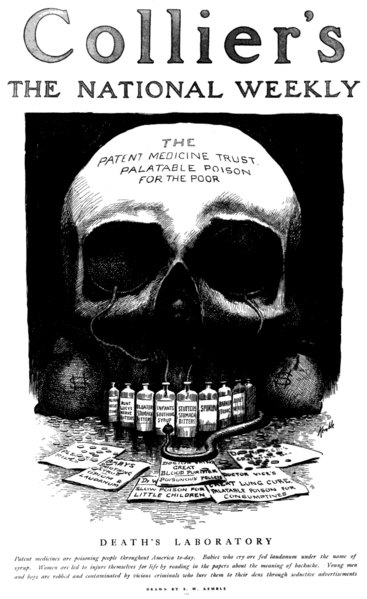
Yes, we have desperately serious problems with the illegal proliferation of addictive drugs in modern times, particularly methamphetamines. But just imagine living in an era when people of every age and every walk of life, including huge numbers of respectable middle class housewives—were hooked on drugs from their own “patent medicine cabinets.” And kids and even infants were ignorantly plied with strong narcotics just for simple coughs–or restlessness!